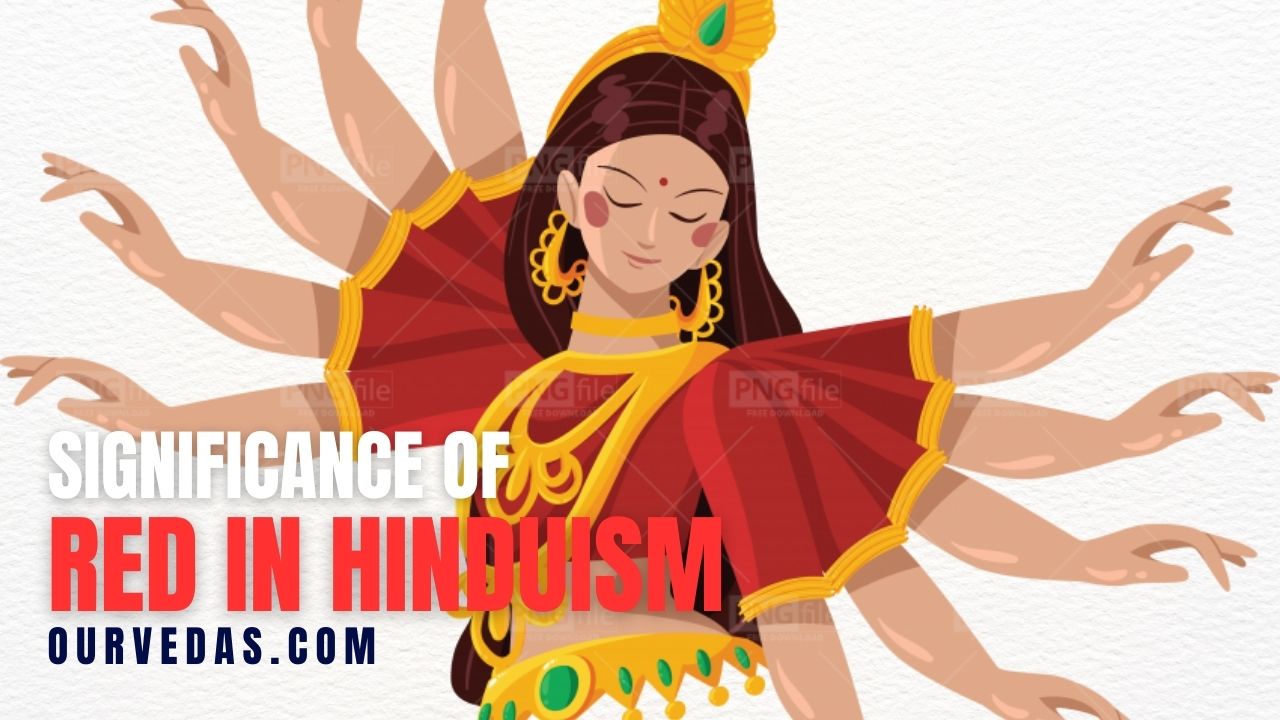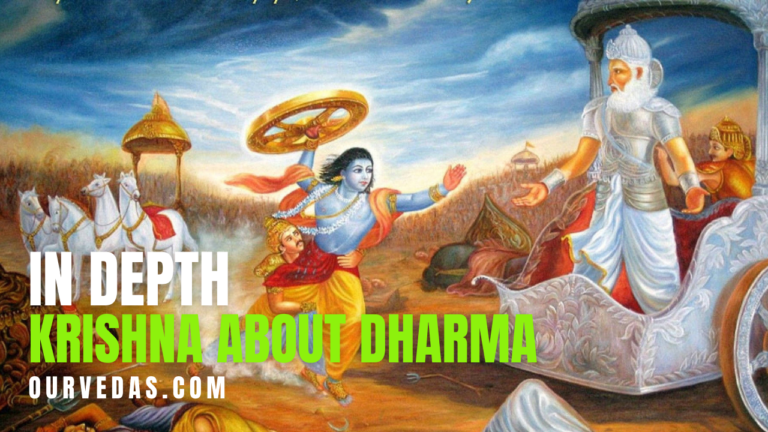Red is a very symbolic color in Hinduism. It has deep roots since ancient times. It represents a wide range of concepts, from power and purity to sensuality and spiritual growth. This bright color has deep cultural, religious, and social fabric significance in Hindu traditions.
To better understand the significance of red in Hinduism, one needs to explore its role in Hindu rituals and festivals. The association of red color with various deities is also very unique in Hinduism.
Significance of Red in Hinduism
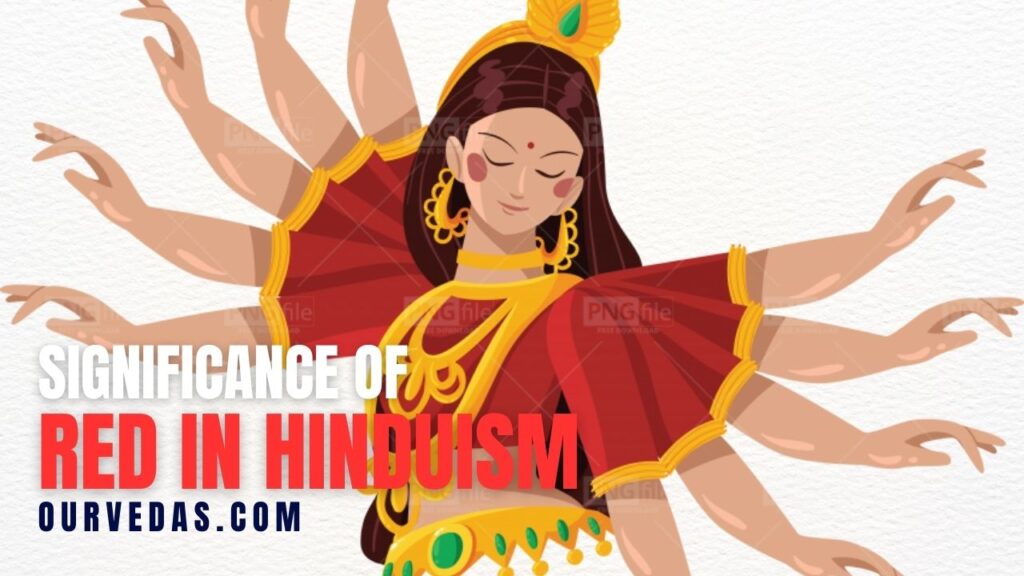
In Hinduism, red is often linked with Shakti, the divine feminine energy of the nature. It is the color of the supreme Goddess Adishakti. This makes red a symbol of strength and vitality.
In Indian culture, red is also indicative of prosperity and wealth. This association with prosperity goes beyond mere business to personal life, where red is thought to bring good fortune and ward off the evil eye.
Another important role of red in Hindu rites and festivals is that it depicts the choices for auspicious events. Marriage ceremonies often use red as their color because it symbolizes the Goddess Durga, representing the power of women and new conquests.
At other times, like festival seasons, the color is often seen adorning various aspects: in the red tilak or kumkuma, applied to the forehead. A mark, though a sign of blessing, denotes devotion and protection as well. The usage of red within the rituals again goes to the bottom line that this color evokes the favor of God and helps avert bad energies.
Relationship of Red with Hindu Gods and Goddesses
The Goddess Lakshmi, associated with wealth and prosperity, is also connected with the color red. This reiterates the fact that it has a relation with abundance and good luck. It shows the significance of Red in Hinduism.
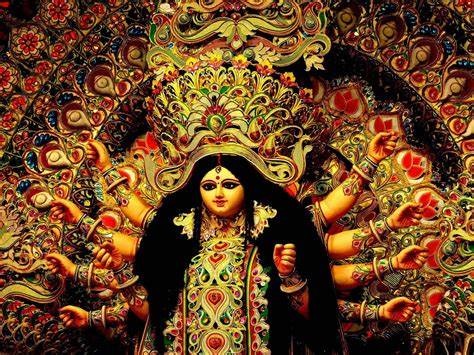
As we have already mentioned, color red is associated with Shakti, the power and energy embodied by the female. Therefore, it protects against evil spirits and negative energies. This notion of protection on the part of red is amplified by the cultural practice of donning a string around the wrist for obtaining spiritual protection.
Ancient Origin and Significance of Red in Hinduism
Red originated in Hinduism during the Vedic period. In the Rigveda, one of the oldest sacred books of Hinduism, red is associated with Agni, the fire god. Agni is often described as dressed in red, signifying his transformative and purifying power. Thus, red became a color synonymous with purity, strength, and the divine energy that Agni represents.
Red is also a colorless sign of Shakti, the feminine principle of power. This is reflected in the practice of worshiping goddesses such as Durga and Kali through their depiction in clothes with red or bedecked with red flowers. It represents boldness, strength, and the female capability to destroy evil and guard the devotees.
Social and Cultural Significance of Red in Hinduism
The color red in Hindu society has specific social and cultural undertones which shows the significance of Red in Hinduism. For married women, the color red refers to their being married and the zing of life in the relationship. In some cultures of old, widows were barred from donning red-colored clothes since this color is associated with the life and energy of a married woman. Therefore, the color has an association with life, vitality, and prosperity.
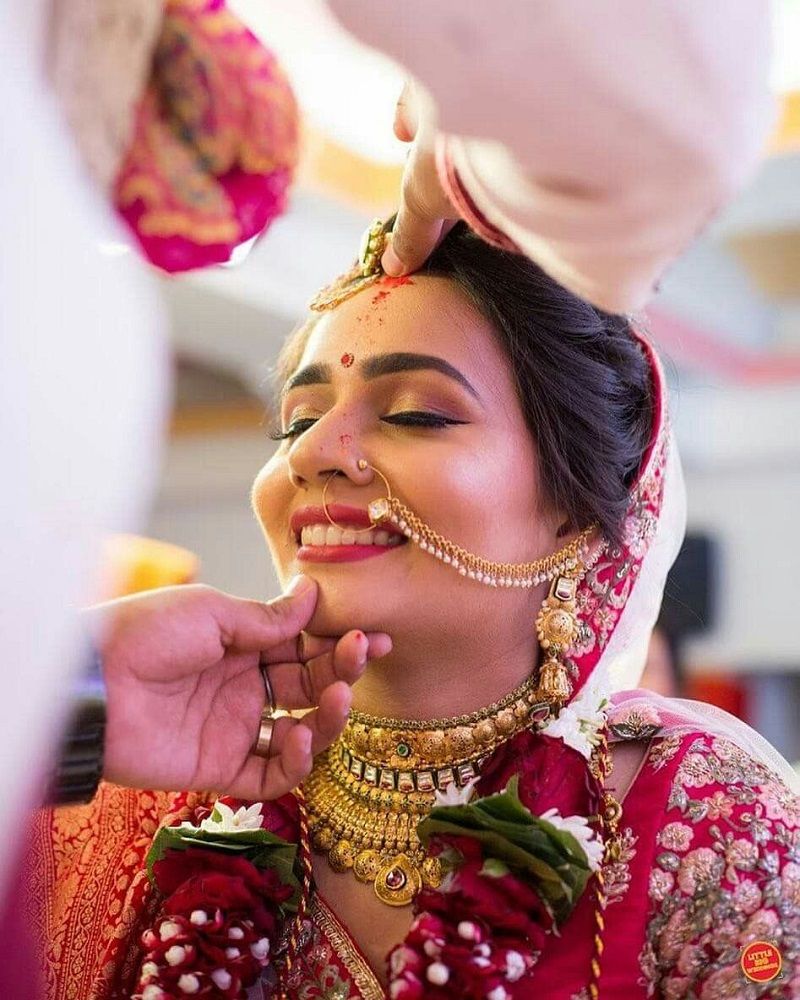
Hinduism also exemplifies red as the color of joy and celebrations. It is often used in festival clothing and ornaments to symbolize happiness and well-being. The bright tone is one of the most prevalent tones in Indian weddings, and it is said to bring fortune to the newlywed couple and their families.
FAQs
What is Shakti in Hinduism?
Shakti represents the dynamic feminine force of the universe. It is depicted as the Goddess herself and represents feminine energy. This notion is at the forefront of many Hindu practices, particularly those that worship the divine feminine, such as Shaktism.
The primordial cosmic energy that brings the universe into existence and sustains it is described in Hindu philosophy as Shakti. This relates to and symbolizes life, movement, or energy contained within matter. Shakti is sometimes compared to and contrasted with Shiva, the masculine principle of stillness and destruction. Together, Shakti and Shiva represent the dual aspects of the divine: creation and destruction, energy and consciousness, activity and passivity.
Shakti is not just physical ability or power but also spiritual energy that can be used for spiritual growth and transformation. That way, Shakti was the energy that could propel the soul to enlightenment and liberation (moksha). It was this dynamic part of the divine that changed and brought about evolution in the universe and living beings.
Shakti is often identified with a female god in Hinduism. She comes in many different forms and has multiple names. She is worshipped to gain material prosperity and spiritual well-being, and she is often shown with lotus flowers, which symbolize purity and fertility. Shakti is adorned with color Red and it shows the significance of Red in Hinduism.
The Goddess of knowledge, music, and the arts, Saraswati represents Shakti’s creative and intellectual quality. She is sought after for gaining wisdom and knowledge and is often depicted playing the veena, a musical instrument.
The worship of Shakti is at the center of one of the most significant sects of Hinduism, Shaktism. The Shaktas, the worshippers of Shakti, hold the ultimate reality and source of all powers within the universe as feminine and divine. The Goddess Shakti is thus worshipped in a series of rituals, offerings, and festivals that express her different forms and attributes.
Tantra is a significant Shakti worship because of its emphasis on the power of harnessing the potential of Shakti. This involves practices in meditation, mantras, and rituals, which are said to awaken the sleeping energy of Kundalini Shakti, which rests at the bottom of the spinal column and spirals through all the chakras for the practitioner’s spiritual illumination.
What is Sindoor?
Sindoor, also known as kumkum, is a red or orange-red powdered material used by Hindus in different rituals and in the practice of their culture. It is particularly significant in terms of religious and social functions, especially marriage and worship practices among Hindus. Sindoor forms an integral part of Hindu customs and represents some elements of life, spirituality, and, most importantly, marital status.
Sindoor has been used since ancient times, and it is referenced in different Hindu scriptures and texts. Sindoor was used from the time of the Harappan civilization, showing how long sindoor has been in Indian culture. The use of sindoor changed through the centuries, but its meaning remained intact.
Sindoor is a bright red powder prepared with turmeric, lime, and mercury. This shows the significance of red in Hinduism. It is considered sacred and is accompanied by rituals and prayers. The sindoor is not used only in religious contexts; in many parts of India, it is a common cultural practice.
One of the most popular uses of sindoor is in Hindu marriages. In this ceremony, the groom applies sindoor to the hair parting of the bride to signify her being a married woman. This rite is referred to as “sindoor daan” and is one of the most crucial moments in any Hindu wedding.
Sindoor’s application means that the bride is devoted to her husband and has taken up the role of a wife. It is believed to bring good fortune, longevity, and prosperity to the marriage. Sindoor’s red color symbolizes power, fertility, and life force, so it is considered a very auspicious sign for married women.
In most regions of India, married women apply sindoor daily as part of their daily ritual. They apply it to the parting of their hair to mark the fact of their marriage and seek the blessings of Parvati, who is considered an ideal wife and embodiment of marital harmony.
Sindoor also forms an essential part of the Hindu religious ritual and worship. It is used to mark the foreheads of devotees with a sign of blessing and protection. The tilak or bindi made of sindoor is said to activate the Ajna chakra, which is the energy point associated with intuition and spiritual insight.
Sindoor is given to the gods during festivals and religious ceremonies. It is rubbed on the idols’ and holy images’ foreheads to indicate the deity’s power and presence.
Many women apply sindoor daily, maintaining their connection to their husbands and binding themselves to the family. Some places associate sindoor with fertility and motherhood. This is said to ensure the good health of the family and also the continuation of life. Its cultural importance can be seen as it is a part of different life events like weddings, festivals, and everyday rituals.

